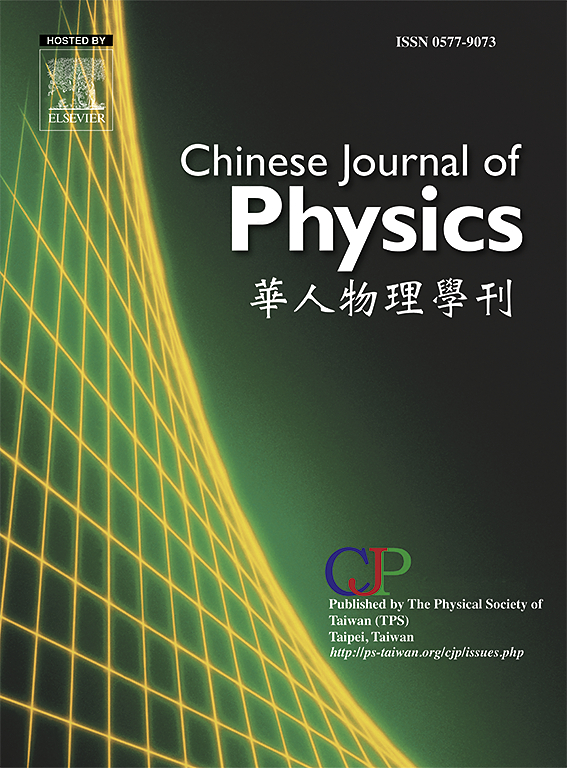脑脊液脉动流的数学建模与分析
IF 4.6
2区 物理与天体物理
Q1 PHYSICS, MULTIDISCIPLINARY
引用次数: 0
摘要
本研究提出了一个数学模型,分析脑脊液(CSF)的流速、壁面剪切应力和蛛网膜下腔内的流速,将其视为通道中的多孔介质。了解脑脊液动力学对神经系统健康至关重要,特别是在药物输送、脑积水和神经退行性疾病方面。采用微扰技术将非线性偏微分方程转化为常微分方程,并对其进行解析求解。研究结果表明,无滑移边界条件和层流压力驱动的约束空间导致了抛物线速度分布。结果表明,脑脊液流速随达西数的增加而增大,随频率的增加而减小,强调了多孔阻力和脉动效应的作用。高频血流速率的降低会导致脑脊液循环受损,直接导致大脑废物清除不足,这是导致阿尔茨海默病和其他神经退行性疾病等疾病的一个已知因素。此外,降低剪切应力和较高的达西数具有显著的临床后果,因为对大脑和脊髓结构的过度机械力会加速脊髓空洞和创伤性脑损伤等疾病的进展。这些见解为开发针对csf相关异常的靶向治疗和优化治疗(如鞘内给药)提供了重要基础。本文章由计算机程序翻译,如有差异,请以英文原文为准。

Mathematical modeling and analysis of the pulsating flow of the cerebrospinal fluid
This study presents a mathematical model analyzing the cerebrospinal fluid (CSF) flow velocity, wall shear stress, and flow rate within the subarachnoid space, treating it as a porous medium in a channel. Understanding CSF dynamics is essential for neurological health, particularly in drug delivery, hydrocephalus, and neurodegenerative diseases. The perturbation technique is applied to transform the non-linear partial differential equation into an ordinary differential equation, which is then solved analytically. The findings reveal that the no-slip boundary condition and laminar pressure-driven flow in the constrained spaces lead to a parabolic velocity profile. The results indicate that the CSF flow velocity increases with increasing Darcy number and decreases with frequency, emphasizing the role of the porous resistance and pulsatile effects. A reduction in the flow rate at higher frequencies leads to impaired CSF circulation, directly contributing to inadequate waste clearance from the brain, a factor known to drive conditions such as Alzheimer’s disease and other neurodegenerative disorders. Furthermore, decreased shear stress with a higher Darcy number has significant clinical consequences, as excessive mechanical forces on the brain and spinal cord structures accelerate the progression of disorders like syringomyelia and traumatic brain injuries. These insights provide a critical foundation for developing targeted therapies for CSF-related abnormalities and optimizing treatments, such as intrathecal drug delivery.
求助全文
通过发布文献求助,成功后即可免费获取论文全文。
去求助
来源期刊

Chinese Journal of Physics
物理-物理:综合
CiteScore
8.50
自引率
10.00%
发文量
361
审稿时长
44 days
期刊介绍:
The Chinese Journal of Physics publishes important advances in various branches in physics, including statistical and biophysical physics, condensed matter physics, atomic/molecular physics, optics, particle physics and nuclear physics.
The editors welcome manuscripts on:
-General Physics: Statistical and Quantum Mechanics, etc.-
Gravitation and Astrophysics-
Elementary Particles and Fields-
Nuclear Physics-
Atomic, Molecular, and Optical Physics-
Quantum Information and Quantum Computation-
Fluid Dynamics, Nonlinear Dynamics, Chaos, and Complex Networks-
Plasma and Beam Physics-
Condensed Matter: Structure, etc.-
Condensed Matter: Electronic Properties, etc.-
Polymer, Soft Matter, Biological, and Interdisciplinary Physics.
CJP publishes regular research papers, feature articles and review papers.
 求助内容:
求助内容: 应助结果提醒方式:
应助结果提醒方式:


